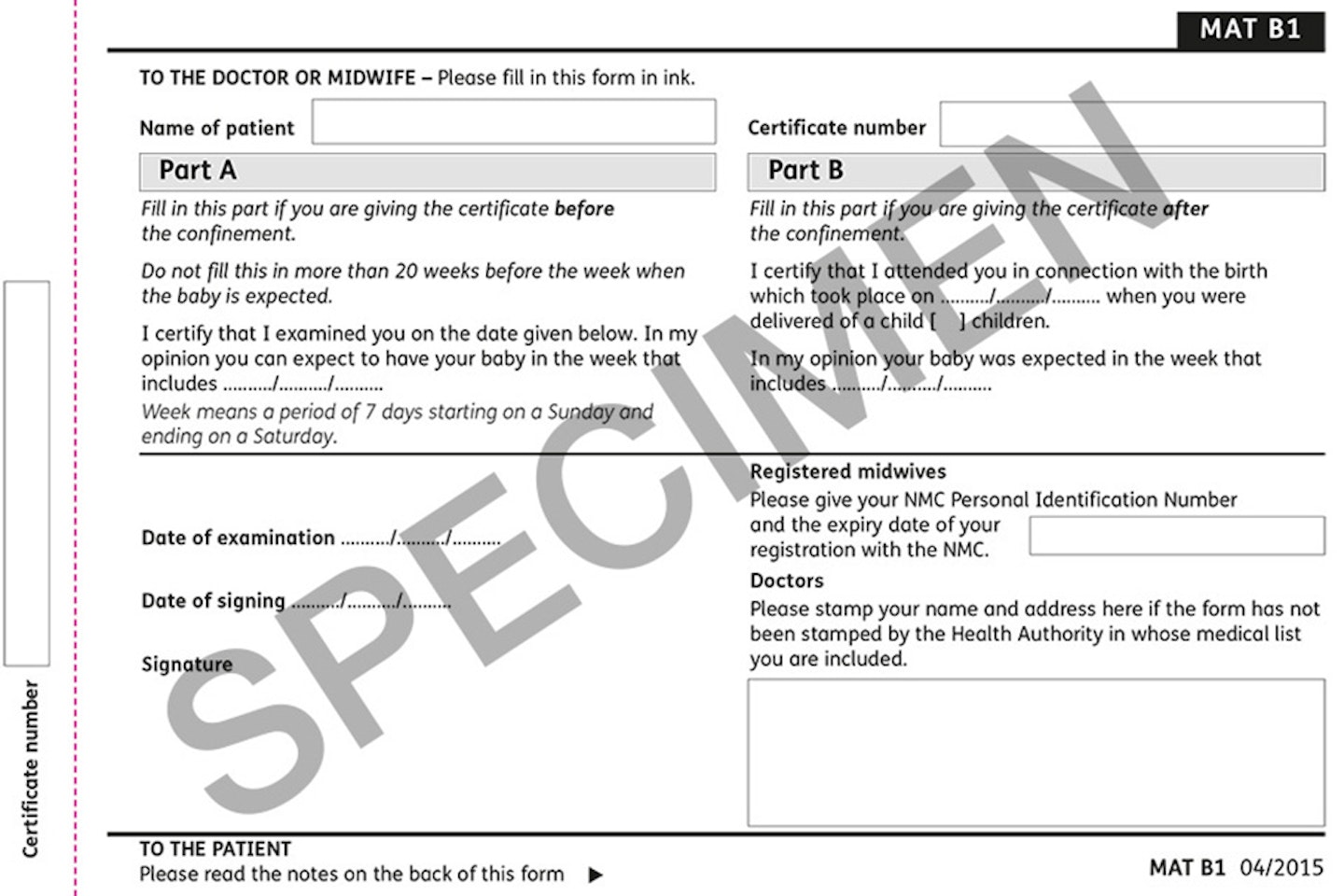There’s so much to think about once you find out you’re pregnant – it’s tempting to skip the boring bit and plunge straight into buying babygrows and buggies, but you do need to make sure your maternity leave and pay is set up. This involves getting the correct form from your midwife or GP. A Mat B1 form is essentially your ticket to claim maternity pay and benefits from your employer.
Here's everything you need to know about how to get one, who needs to fill it out and what it entitles you to.
What is a MAT B1 form?
A MAT B1 form, or Maternity Certificate, is a form from the government that gives your employer medical evidence of your pregnancy and when your baby is due.
You'll need a MAT B1 form in order to claim maternity pay and benefits, whether you're unemployed, self-employed, full time or part-time. The form allows you to claim Statutory Maternity Pay (SMP) from your employer. If you are self-employed, or you don't work, you will also need this certificate to claim your 39-week Maternity Allowance from the government.
How and when do I get my MAT B1 form?
Although your midwife should automatically give you a MAT B1 form at the antenatal appointment that takes place after your 20-week scan, you may need to request it - it is available from either your midwife or your doctor.
In order to be eligible for Maternity Allowance, according to Gov UK, you will need to:
• Be employed but unable to claim Statutory Maternity Pay (SMP)
• Be self-employed and pay Class 2 National Insurance
• Have stopped working recently
What do I need to do after I receive it?
Once you receive your form, you’ll need to sign it, make a copy and then at some stage before you are 25 weeks pregnant (by the end of the 15th week before the beginning of your expected week of birth), you’ll need to give it to your employer, so either your manager or HR team. If you work two jobs, you'll need to give a copy of the MAT B1 form to both employers.
Once you've given it to your employer, you can start arranging your maternity pay and benefits. Remember you need to give your employer at least 28 days' notice before you begin claiming your SMP, so it's a good idea to get this sorted sooner rather than later.
That said, whilst it's tempting to share your exciting news with your colleagues right away, many people wait until after their 12-week-scan when the risk of miscarriage is reduced.
Bear in mind that you can’t take time off for antenatal appointments and checks until you’ve told your employer about your pregnancy.
What will my MAT B1 form look like?
It's a pretty standard medical document, but here's what it looks like:

What happens if I lose my MAT B1 form?
If you do end up losing your form, you are able to apply for a duplicate, but this can take some time and hold things up. For this reason, we recommend making a copy as soon as you sign it and keeping it in a safe place before the baby brain sets in!
What else do I need to tell my employer when pregnant?
Either in a letter or an email (check with your HR department for your company policy), you need to tell your boss your due date and the date you want to start your statutory maternity leave and pay.
